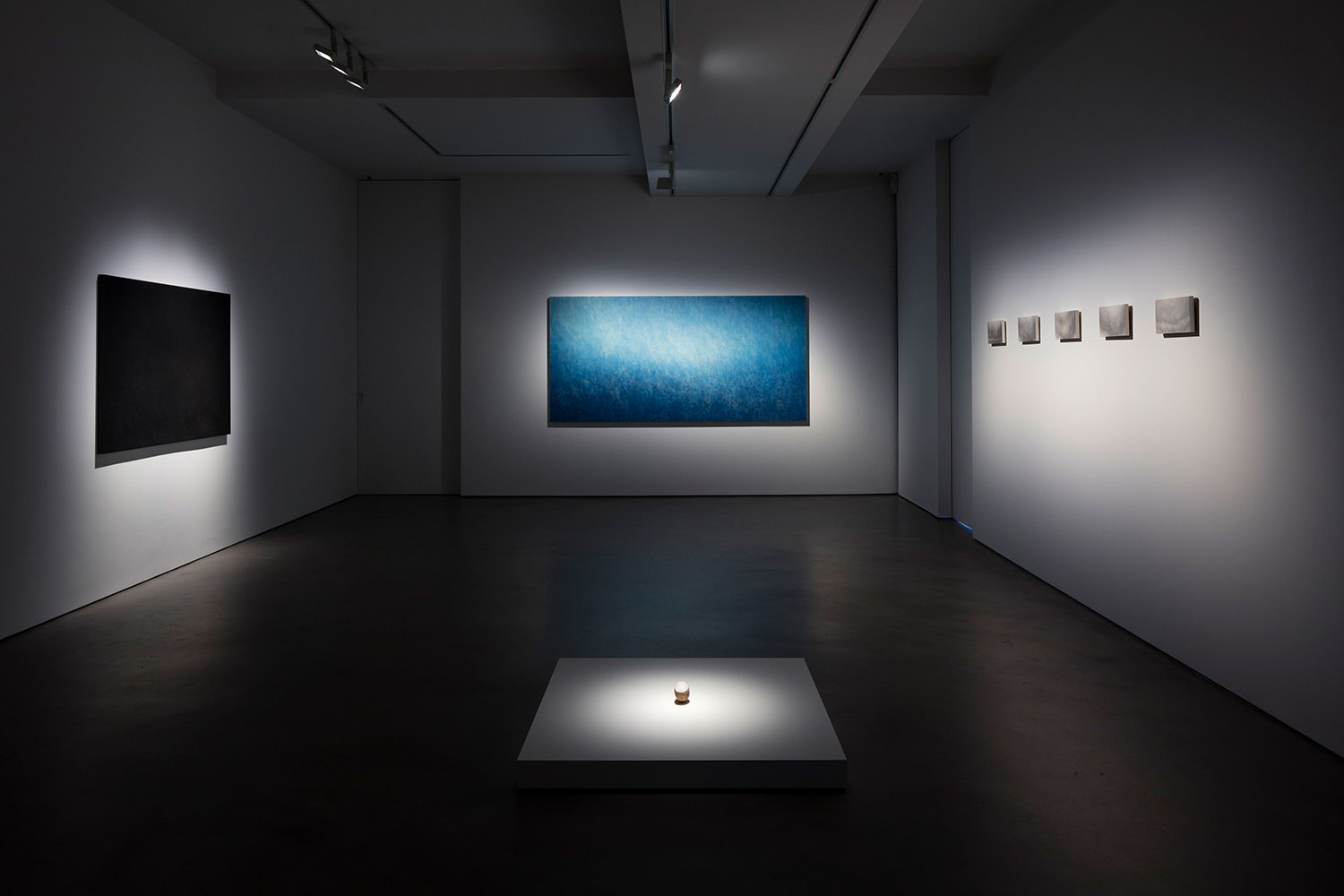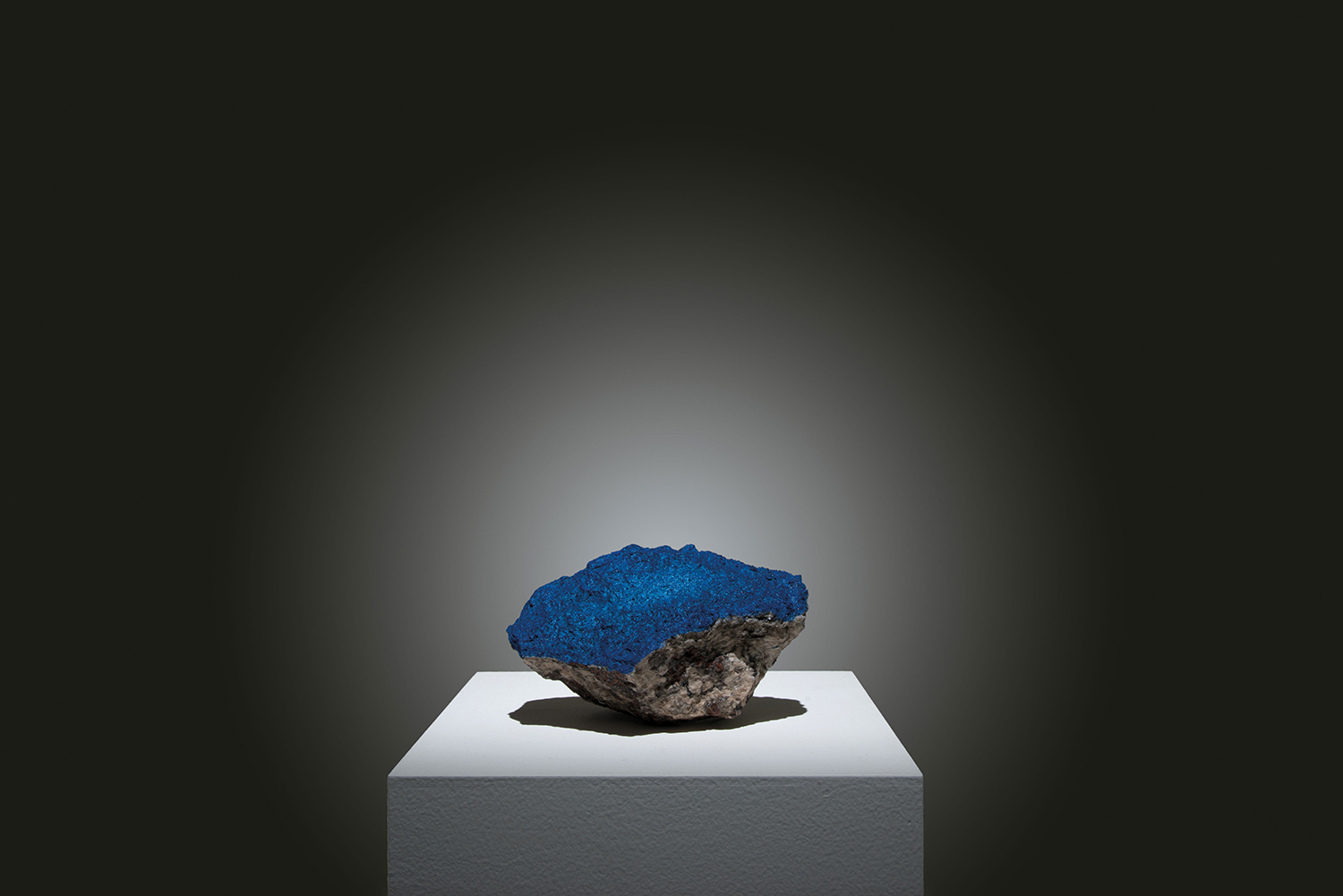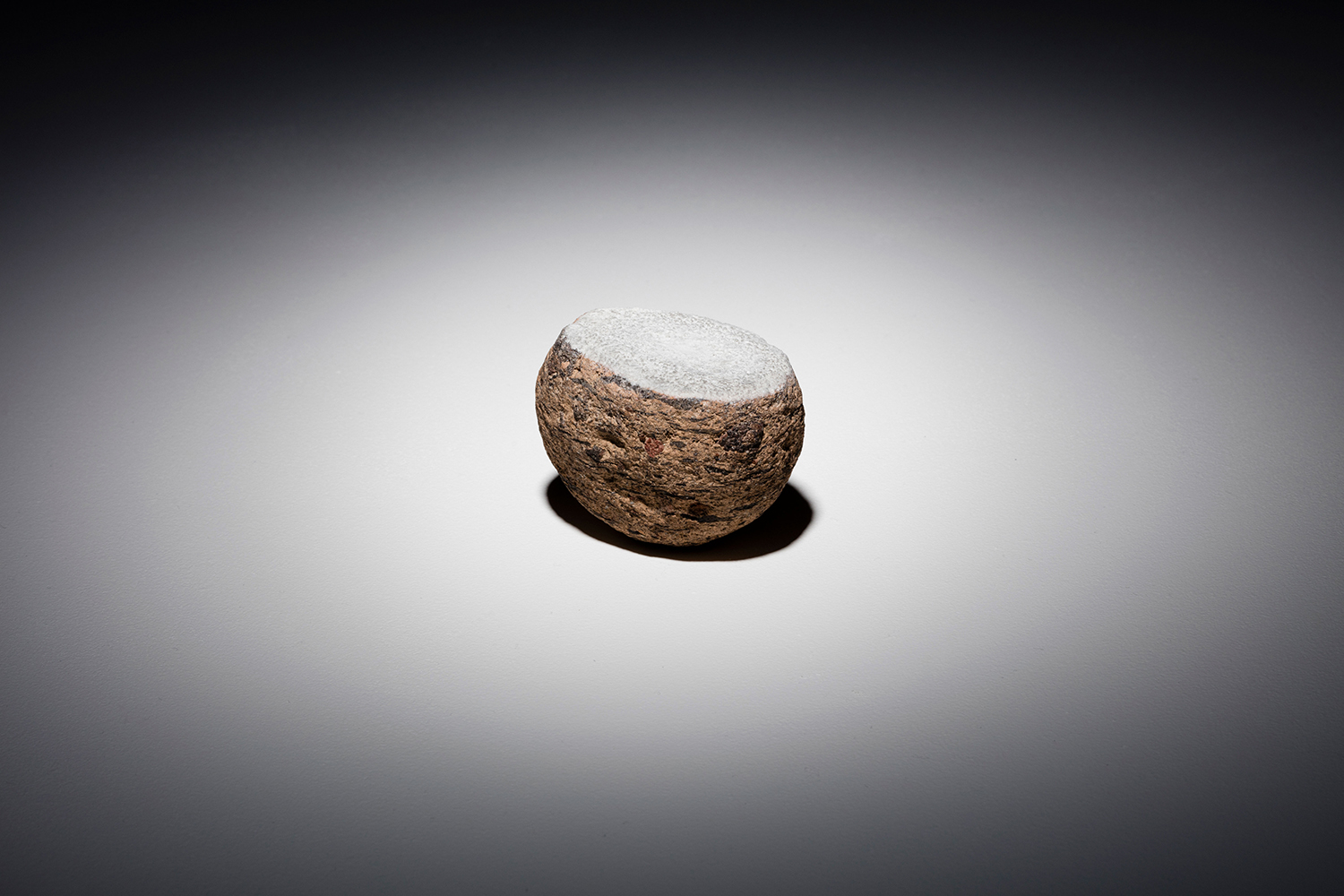Shows
Makoto Ofune at Olivier Malingue


In a darkened gallery overlooking London’s New Bond Street, a series of paintings and small sculptures with coarse, tactile surfaces glistened and refracted the room’s spotlights. This dramatic display of works highlights Makoto Ofune’s time-intensive practice derived from the techniques of nihonga—traditional Japanese paintings—and created an atmosphere conducive to introspection, instilling a silence in Olivier Malingue gallery and its visitors.



The artist has made explicit that the mystery of space inspires his imagination, and his work seeks to respond to its environment, offering what he hopes are transformative experiences. This perspective and exploration draw on the artist’s appreciation for the interaction of the work with the blank space around it—an understanding informed by the Japanese concept of margins, or yohaku. The natural materials used in his works help him realize this aim. His use of traditional Japanese powdered pigments, iwa-enogu—derived from minerals crushed by hand—provide a colorful palette, which integrated each piece into the room, merging them with the surroundings.
Eternal #5 (2007–14), an elongated wall-based canvas covered in deep blue pigment, and Reflection Field – Autunite (2017), in which a nugget of the autunite mineral is cut to reveal a coarse surface covered with royal-blue-powdered pigments, were in the first gallery space. Balancing on a tall, thin plinth, the autunite entices the viewer into what Ofune recognizes as each work’s “world.” These are both intricate works with intense and meticulous coloration, which produce a mesmerizing effect. The layering of deep blue and indigo in Eternal #5 (2007–14), a horizontal work on canvas, creates dynamic ripples that appear to pulsate across the canvas from its central horizon line out toward its edges.
This rhythm is reiterated in three circular works hung on an adjacent wall. Bathed in roundels of light, STILL WAVE #10, STILL WAVE #11 and STILL WAVE #12 (all 2017) glow, emphasizing the weave of their hemp paper base and exposing the powdered pigment caught in its rough fibers. The knots of this material become further apparent in an arrangement of the artist’s earlier works, WAVE #87–91 (all 2012). This line of five compact rectangular works led the visitor to the back of the gallery, where the artist’s palette changed to a chalky white and charcoal gray. The build-up of these pigments, applied using nikawa, an animal gelatin glue, creates an abstracted cascade reminiscent of seascapes and dramatic Turner-esque oceans—a key inspiration for the artist.
These opalescent STILL WAVE works were the highlight of the show, and along with a second bulbous rock piece Reflection Field – Welded Tuff (2015), were installed low to the floor opposite, exposing a dazzling, crisp white face. A harmony was struck. Although not aligned with any religion, Ofune’s works are imbued with a sense of spirituality, and some have been exhibited in Kyoto’s Shinto shrines and in Saint-Merry Church in Paris. The artist has, to some extent, transferred the contemplative nature of these spaces to the gallery. Ofune’s ability to reflect the purity and sanctity of these sites in his work is a fine skill, and the commitment to traditional Japanese painting practice ensured that the viewer had a profound encounter.

Makoto Ofune’s solo exhibition is on view at Olivier Malingue, London, until May 20, 2017.







